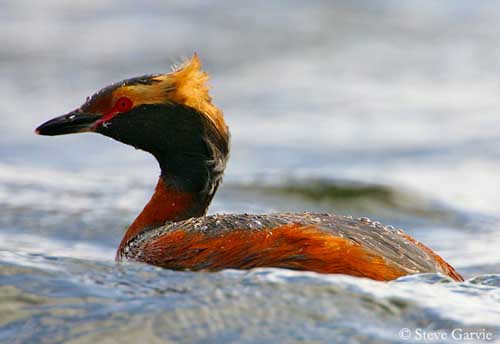
Fr: Grèbe esclavon
All: Ohrentaucher
Esp: Zampullín Cuellirrojo
Ital: Svasso cornuto
Nd: Kuifduiker
Sd: Svarthakedopping
Photographers:
Steve Garvie
RAINBIRDER Photo galleries
Tom Grey
Tom Grey's Bird Pictures
Tom Merigan
Tom Merigan’s Photo Galleries
Bob Moul
Nature Photography
Ingo Waschkies
My bird pictures on Pbase
Text by Nicole Bouglouan
Sources:
HANDBOOK OF THE BIRDS OF THE WORLD vol 1 by Josep del Hoyo-Andrew Elliot-Jordi Sargatal - Lynx Edicions - ISBN: 8487334105
THE HANDBOOK OF BIRD IDENTIFICATION FOR EUROPE AND THE WESTERN PALEARCTIC by Mark Beaman, Steve Madge - C.Helm - ISBN: 0713639601
THE COMPLETE BOOK OF BRITISH BIRDS – Written by “Royal Society for the Protection of Birds” experts - Préface de Magnus Magnusson - Michael Cady- Rob Hume Editors - ISBN: 0749509112
ENCYCLOPEDIE DES OISEAUX DE FRANCE ET D’EUROPE – de Peter Hayman et Rob Hume - Flammarion – ISBN : 2082009920
BirdLife International (BirdLife International)
All About Birds (Cornell Lab of Ornithology)
What Bird-The ultimate Bird Guide (Mitchell Waite)
Horned Grebe
Podiceps auritus
Podocipediforme Order – Podicipedidae Family
BIOMETRICS:
Length: 31-38 cm
Weight: 300-470 g
DESCRIPTION:
The Horned Grebe (or Slavonian Grebe) occurs both in Old and New Worlds. This beautiful bird performs spectacular displays at the beginning of the breeding season.
Both adults are similar.
The adult in breeding plumage has blackish-brown upperparts and hindneck, including wings and tail, but the secondary flight feathers are white.

The underparts are bright reddish on breast and flanks. The belly is white. The underwing is whitish.
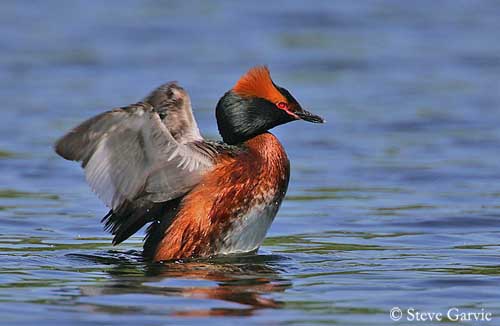
The head is black with reddish forehead and lores, and conspicuous golden tufts. The black head feathers can erect, forming a ruff on the sides of the head.
The bill is straight and black. The eyes are bright red. Legs and feet are black.
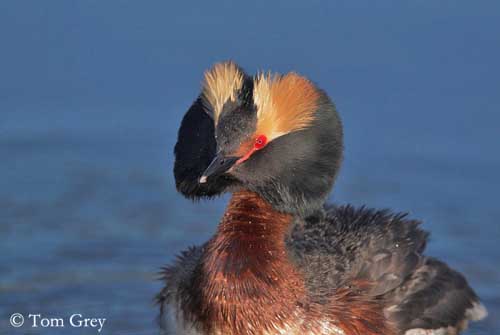
The adult in winter plumage is black and white. Forehead, crown, hindneck and upperparts are blackish. The underparts, cheeks and head sides are white. The flanks can be greyish or streaked grey.
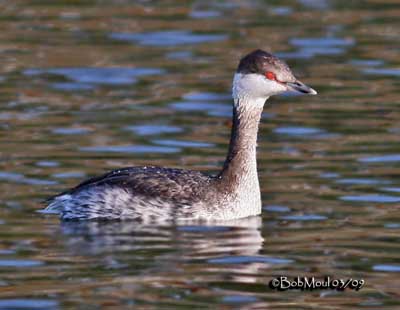
Some birds may have transitional plumage in spring, with some reddish on head and neck.
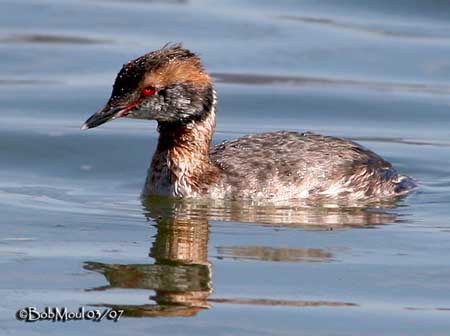

The juvenile resembles the adult in winter, with indistinct separation between the black head and the white face, and it has browner plumage.
There are two subspecies:
The race P.a. auritus occurs in the Old World.
The race P.a. cornutus is a New World species. This one is greyer above and especially on the crown.
VOICE: SOUNDS BY XENO-CANTO
The Horned Grebe is usually silent outside the breeding season. During this period, it utters repeated plaintive rattling “joarrrh”, and a loud, nasal trill given in series, with each phrase falling and dying away “dji-ji-ji-ji-ji-ji-ji-ji-ji-ji-ji-jrrh”.
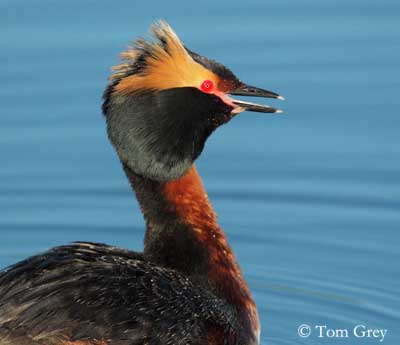
HABITAT:
The Horned Grebe frequents freshwater lakes with emergent vegetation during the breeding season, and also pools and marshes with some open patches, and parts of large lakes and rivers.
It becomes mostly marine in winter, and can be seen in sheltered coastal bays and estuaries. In the southern parts of the breeding range, it also occurs on large lakes.
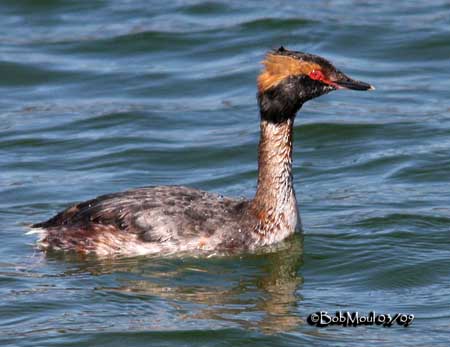
RANGE:
The Horned Grebe of race “auritus” breeds in Palaearctic, from Iceland and Baltic to Kamchatka. It winters from the North Sea to Caspian.
The race “cornutus” breeds in C Alaska to NW and NC USA. It winters S to California and Texas.
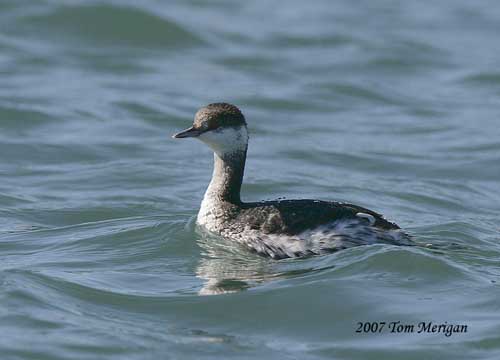
BEHAVIOUR:
The Horned Grebe feeds mainly on fish and arthropods, but it is able to adapt itself according to the food availability. Fish and crustaceans are more important during winter.
This grebe is very agile underwater, and pursues its preys by swimming at 1m/second.
It forages by diving from the surface during about 20 seconds, but it also takes food from the surface, catching flying insects and floating items.
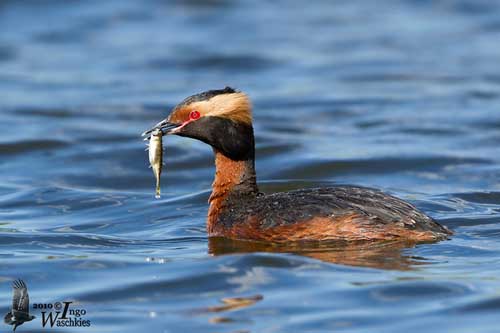
At the beginning of the breeding season, this bright-coloured grebe performs beautiful courtship displays. They perform several rituals such as the “weed-rush”. They gather some aquatic plants from the bottom and then, both birds emerge and face each other and start to dance. They turn parallel to each other and race together across the water.
This display is also named “rushing-ceremony”, and can be performed by a male and a female, by two males or by several males and one female.
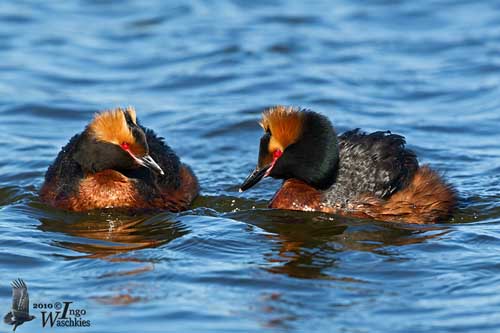
During these displays, we can hear raucous calls and loud splashes. The birds rush wildly across the water with stiff neck and head before to dive.
The copulation usually occurs out of the water, often on platforms built by both adults in shallow water. Displays and copulations are reported several weeks or months before the laying.
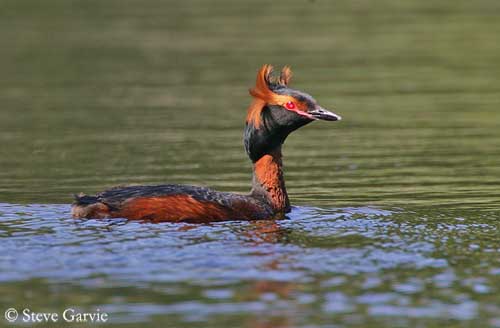
During this period, the Horned Grebe is territorial, and the male performs territorial defence displays with chases and occasionally fights.
The Horned Grebe is migratory. In N America, they travel overland by night, whereas the coastal migrations are diurnal. They usually winter along the coasts on inshore waters and also on large lakes.
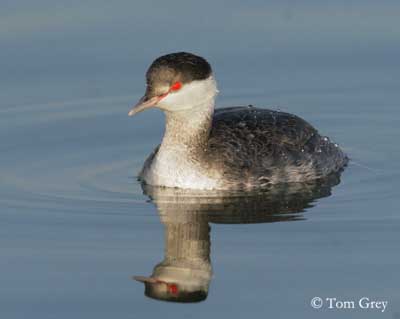
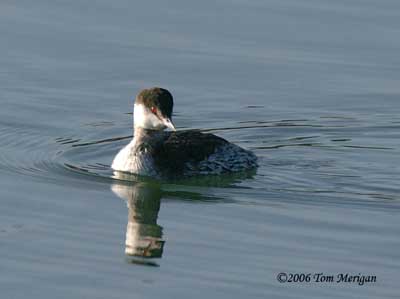
FLIGHT:
The Horned Grebe performs direct flight with rapid wing-beats.
REPRODUCTION:
The laying occurs between April and August-September according to the range, with a peak in June.
The Horned Grebe is usually solitary nester, but it may be sometimes loosely colonial. Both sexes build a floating platform made with aquatic plants and anchored to the vegetation, or built from the bottom, or on rock at water level.
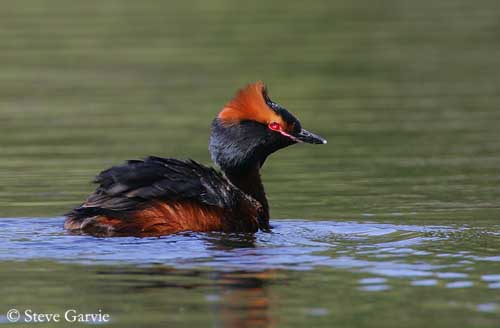
The female lays 4-5 eggs, and produces one brood, but occasionally two. Both adults incubate during 22-25 days. The chicks have striped down, especially on head and neck. They fledge about 55-60 days after hatching, and they are sexually mature at two years.
The young can be seen sometimes between the wings on the back of the adults.
DIET:
The Horned Grebe feeds mainly on fish and crustaceans, and arthropods such as insects (adult and larvae), including beetles, dragonflies, mayflies, water bugs, damselflies and also various crustaceans, some molluscs and worms.
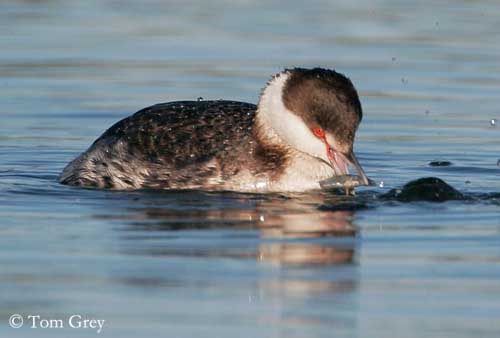
PROTECTION / THERATS / STATUS:
The Horned Grebe is threatened by human’s disturbances, forestry operations on the shores of the lakes where the birds are breeding, fluctuation of water levels and oil pollution.
But currently, the populations appear stable, and the species is evaluated as Least Concern by Birdlife International.
